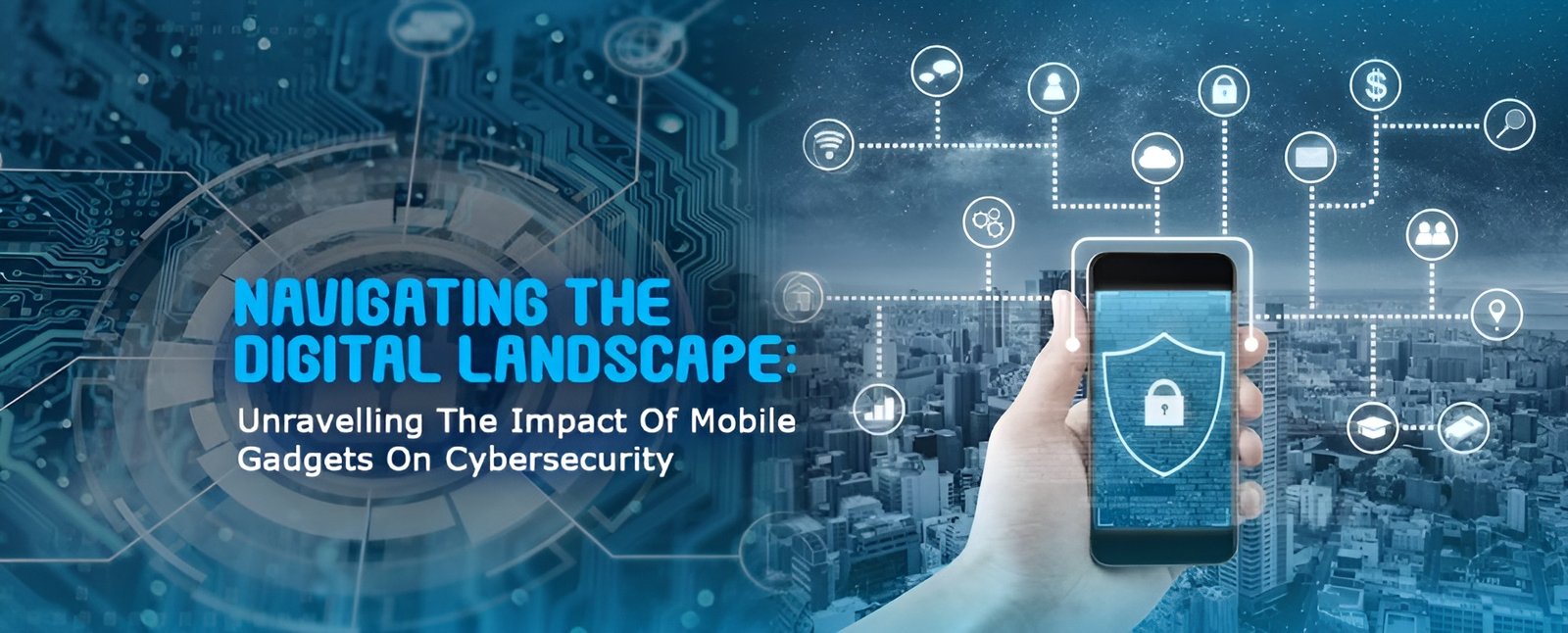
In an era dominated by technological advancements, mobile gadgets have become ubiquitous, seamlessly integrating into every aspect of our lives. From communication and entertainment to productivity and health, these devices have undoubtedly transformed the way we navigate the digital landscape. However, as we revel in the convenience they offer, it’s crucial to ponder upon the flip side of the coin – the impact of mobile gadgets on cybersecurity.
The Pervasive Presence of Mobile Gadgets
Mobile gadgets, encompassing smartphones, tablets, and wearable devices, have become an extension of our identity. According to Statista, the number of smartphone users worldwide is projected to surpass 3.8 billion in 2021, highlighting the pervasive nature of these devices. While their widespread adoption has undoubtedly enhanced connectivity and accessibility, it has also created an expansive attack surface for cyber threats.
Mobile Devices as Vulnerable Targets
The allure of mobile gadgets lies in their multifunctionality. Unfortunately, this very feature makes them attractive targets for cybercriminals. The portability and convenience that these devices provide can inadvertently expose users to a myriad of cybersecurity risks. From malicious apps and phishing attacks to insecure Wi-Fi connections, the vulnerabilities are manifold.
App-Driven Vulnerabilities
The app ecosystem plays a pivotal role in shaping the user experience on mobile devices. However, this very ecosystem can serve as a breeding ground for cybersecurity threats. Malicious apps, often disguised as legitimate ones, can infiltrate devices, compromising sensitive data and personal information. Users are often lured into downloading these apps through enticing promises, unaware of the potential risks they pose.
Moreover, the permission settings granted to these apps can inadvertently grant access to a plethora of sensitive data, ranging from location information to contacts and messages. As users willingly share vast amounts of personal information with apps, they become unwitting contributors to the vast pool of data that cybercriminals exploit.
Phishing Attacks in the Palm of Your Hand
The rise of mobile gadgets has ushered in a new era of phishing attacks. Cybercriminals leverage various tactics, including text messages, emails, and social media, to trick users into divulging sensitive information. The small screens of mobile devices can make it challenging for users to discern phishing attempts, leading to an increased susceptibility to such attacks.
Mobile phishing attacks often exploit the trust users place in familiar interfaces, such as banking apps and social media platforms. With the sophistication of these attacks on the rise, users must exercise caution and adopt cybersecurity best practices to mitigate the risks associated with phishing.
Insecure Wi-Fi: A Gateway for Intruders
The convenience of connecting to public Wi-Fi networks is a double-edged sword. While it facilitates internet access on the go, it also opens the door to potential security breaches. Public Wi-Fi networks are often inadequately secured, making it easier for cybercriminals to intercept data transmitted between the device and the network.
Man-in-the-middle attacks, where an attacker intercepts and potentially alters the communication between two parties, are a prevalent threat in such scenarios. Users must exercise caution when connecting to public Wi-Fi, avoiding sensitive transactions and ensuring the use of virtual private networks (VPNs) to encrypt their data.
The Intersection of Mobile Devices and the Internet of Things (IoT)
As the Internet of Things (IoT) continues to burgeon, the integration of mobile devices into this interconnected web amplifies cybersecurity challenges. Smart homes, wearable devices, and other IoT-enabled gadgets expand the attack surface, providing cybercriminals with additional entry points.
The interconnected nature of these devices means that a security lapse in one can have a cascading effect on the entire network. Mobile gadgets, acting as central hubs for IoT devices, must be fortified with robust security measures to safeguard the entire ecosystem.
Securing the Mobile Frontier: A Call to Action
Amidst the looming threats, there is a pressing need for collective action to fortify the mobile frontier against cybersecurity risks. Users, organizations, and policymakers all play pivotal roles in mitigating the impact of mobile gadgets on cybersecurity.
User Awareness and Education
Empowering users with knowledge is the first line of defense against cybersecurity threats. Educating users about the risks associated with downloading unauthorized apps, falling victim to phishing attacks, and connecting to insecure Wi-Fi networks is crucial. Awareness campaigns and cybersecurity training can equip users with the skills to identify and thwart potential threats.
Security by Design: App Developers Take the Lead
App developers bear a significant responsibility in shaping the security landscape of mobile gadgets. Adopting security by design principles ensures that cybersecurity is an integral part of the app development process. Regular security audits, stringent permission controls, and timely updates to patch vulnerabilities are imperative to create a resilient app ecosystem.
Enterprise-Level Solutions
Organizations must implement robust cybersecurity measures to protect both corporate and employee-owned mobile devices. Mobile device management (MDM) solutions, encryption protocols, and comprehensive security policies can fortify the enterprise against potential threats. Additionally, the implementation of two-factor authentication adds an extra layer of security, mitigating the impact of compromised credentials.
Collaboration and Regulation
The dynamic nature of cybersecurity requires a collaborative approach involving governments, industry stakeholders, and cybersecurity experts. Policymakers play a crucial role in formulating and enforcing regulations that compel organizations to adhere to stringent cybersecurity standards. Collaborative initiatives and information sharing can foster a collective defence against emerging threats.
Conclusion
Mobile gadgets have undeniably revolutionized the way we interact with the digital world, offering unprecedented convenience and connectivity. However, the transformative power of these devices comes with a responsibility to navigate the digital landscape with vigilance and awareness. By understanding the impact of mobile gadgets on cybersecurity and adopting proactive measures, we can ensure a secure and resilient digital future. As we embrace the boundless possibilities that mobile technology affords, let us also strive to fortify the foundations of our digital existence.

